Imagine millions of monarchs migrating south, hundreds and sometimes thousands of feet above the trees, flashing black and bright copper as they make their way from the Northeast to Mexico.
Monarch butterflies have made an incredible comeback in the last five years, in no small part thanks to gardeners saving, spreading and sharing seeds widely across our continent. If you’ve been growing milkweed — or at least not pulling it as weeds — I love you and thank you! Never doubt that your actions, like seeds, are deceptively small.
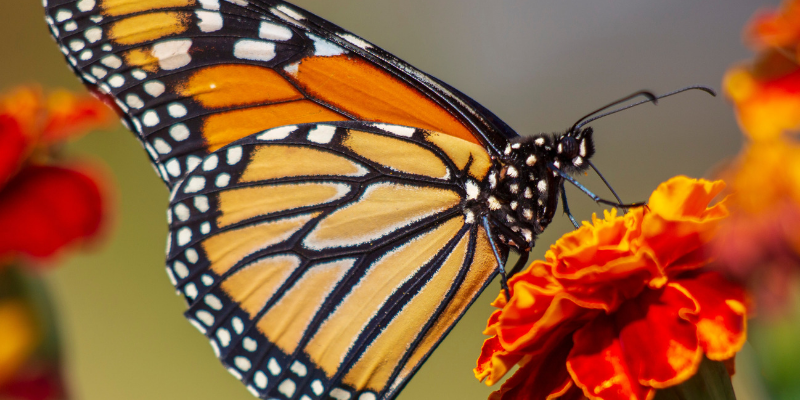
Though adult monarch butterflies feed on many other flowers, like our Queen Sophia marigolds, the monarch caterpillars feed exclusively on milkweed.
Harvesting milkweed seeds brings memories of my childhood, leaves crunching underfoot and thick wool sweaters with hundreds of burrs as polka dots. The leaves are crimson, gold and umber. Grapes are ripe on the vine, but barely.
I remember reaching my hand carefully into each pod, each of us about to burst, wrapping my fingers around the silky seeds and fluff and flinging them skyward, endlessly delighted as they danced away on the wind.
I very much recommend this means of harvesting milkweed seeds, though know you have more options!
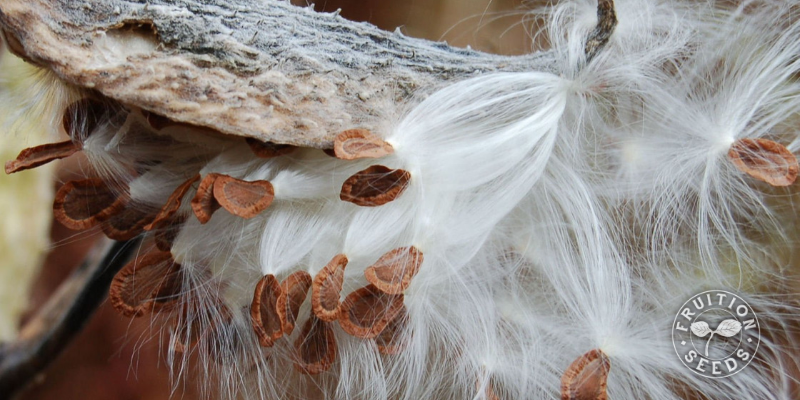
Milkweed pods bursting open is one of my favorite celebrations of autumn!
A few years back, our dear friend and mentor Kim Delaney of Hawthorn Seeds in Ontario, Canada shared with us her technique for harvesting milkweed seeds. Though we still send some flying high, I’m honored to share her strategy with you. Especially if you’re harvesting more than a few pods or are really invested in cleaning them with ease, it’s a game-changer. Indeed, this is the technique we use to harvest many thousands of milkweed seeds each autumn to share with you in our packets. We are specifically harvesting Asclepias syriaca, but this technique is effective on many other species.
When to Harvest Milkweed Seeds
Resist harvesting them too early! Seeds in green pods are immature, so wait for pods to turn gold/brown and dry to be confident your seeds will be ripe and ready for next season.
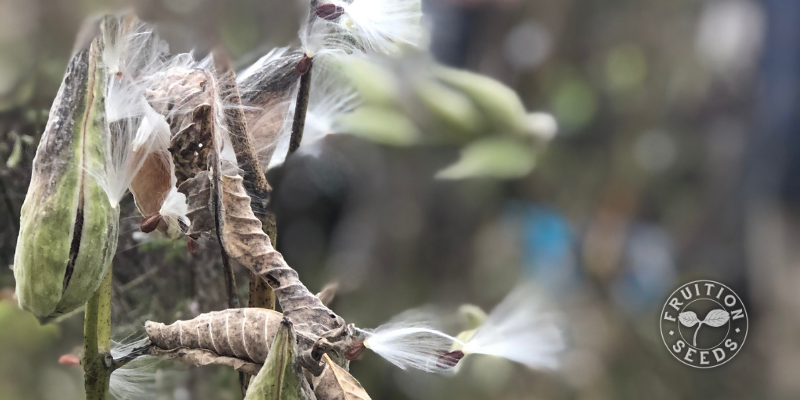
Once pods begin to cleave at the seam, even if they’re a bit green, go ahead and harvest them: It won’t be long ’til they burst open!
Don’t dally! Once seed pods are gold, they’ll quickly open to set their seeds free. If you want to save lots of seeds without the fluff, it’s best to catch them once they’re gold and dry but before they open. You may have a few days, you may have a few hours before they burst! Enjoy observing them mature and rejoice when the time is right.
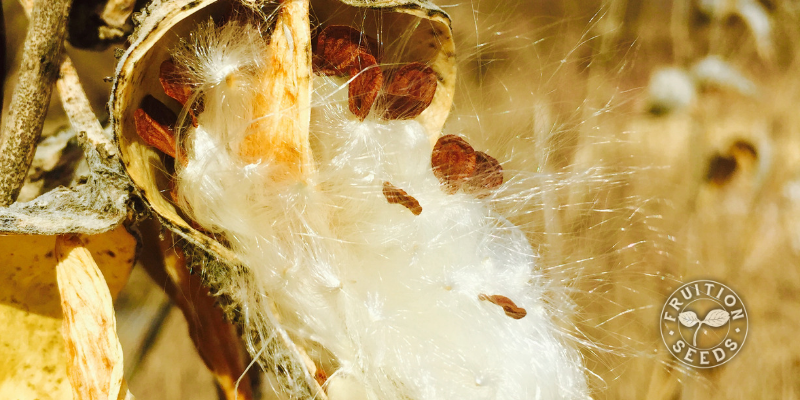
Once milkweed seeds mature, their pods quickly burst open; harvesting their seed just prior is the dream.
How to Harvest Milkweed Seeds
Harvest your gorgeous milkweed pods, gold & dry, and roll each one individually between your palms. The pressure releases the seeds from their white, fluffy parasols so as you open each pod, the seeds fall away from the white, smushed ‘chaff’ like a dream. Pour the released seed into a container and then toss the fluff to the wind! If any seed remains attached to the white filaments, know it is immature and will likely not germinate well, so don’t think twice and let it go.
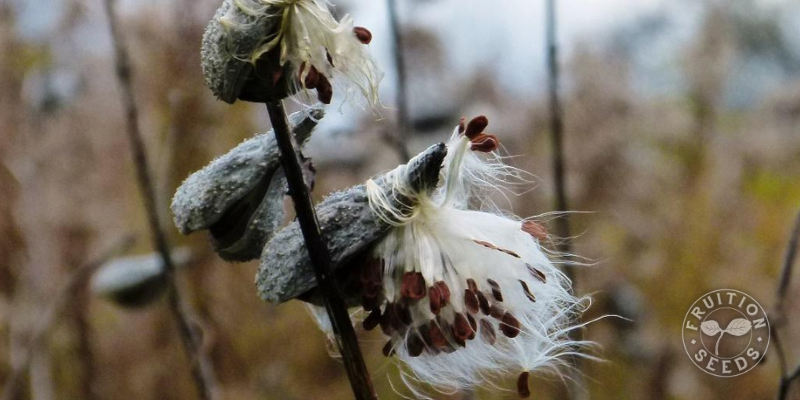
And Friends, if a little bit of gorgeous white fluff falls into your seed, it’s simple to remove by hand, with a breeze or with a fan to winnow.
How to Store Milkweed Seeds
Store your milkweed seeds with the rest of your seed collection in a cool, dark and dry place where the conditions are relatively stable. Desiccant packets remove any excess moisture and subsequent sadness; here are the ones we’ve used for years. For the full story of how to store seeds, hop on over here where you’ll way more detail plus a sweet infographic awaiting you!
When to Sow Milkweed Seeds
Here in the Northeast, nature sows so many seeds in fall. Milkweed is no exception, though a small percentage of her pods open in the spring to spread on the fresh-melted snow.
If you’re keen to cultivate milkweed, both of these are great options.
If you’re harvesting your own and you have hundreds (if not thousands) of seeds, I recommend sowing them in the fall, encouraging them to grow in the way milkweed has for endless millennia. Take note of where milkweed has established in your area: The closer you can get to offering them a similar environment (soil moisture & sunshine, especially), the more abundant your milkweed will establish.
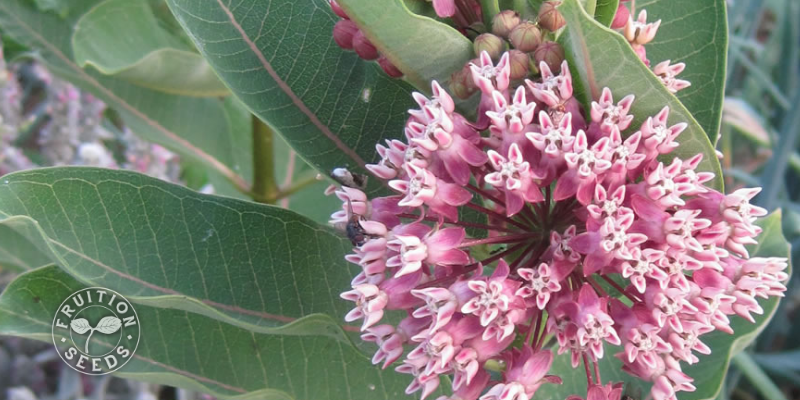
If you’re attached to seeing, encouraging and planting each seedling personally, sow them indoors about four weeks before final frost. We sow two seeds to each large cell, soil block or small pot. Once your seedlings are one inch tall, thin to the strongest one. Once the danger of frost has passed, harden off your seedlings (here’s how!) and transplant them with between one foot between plants.
If your seeds haven’t been frozen, their germination often increases if you wrap them in a moist paper towel in a closed plastic bag and leave them in the fridge for one month prior to planting, simulating the cool, moist conditions of spring.
Once established, you and your monarchs will enjoy milkweed for years!
Just keep in mind they spread by rhizome, so milkweed is most often grown on its own or among other native perennials, rather than in a vegetable garden.
Sow Seeds & Sing Songs,

& the whole Fruition crew
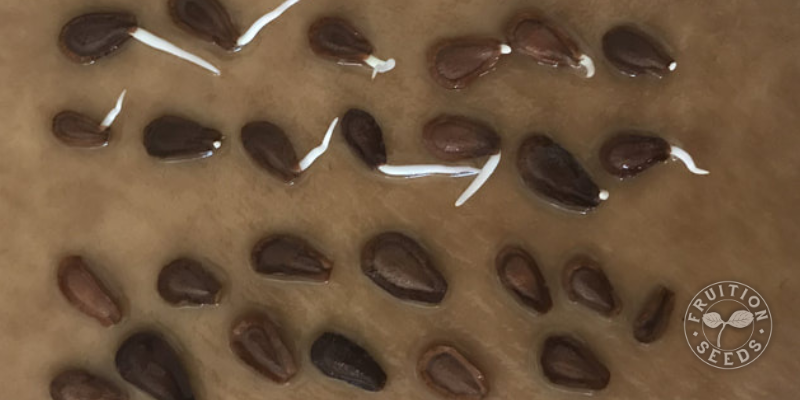
We find germination of milkweed to be erratic, so harvest more than you anticipate needing so you’ll have plenty! This is a germ test with ripe, mature seed on top and slightly immature seed on the bottom. Ripe seed from golden pods makes all the difference!
